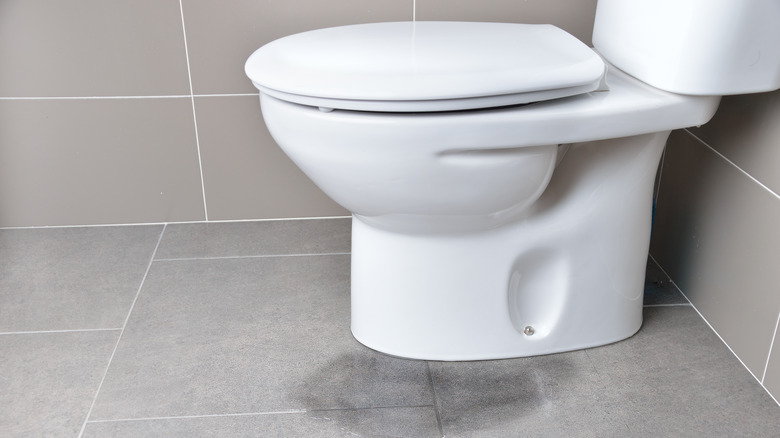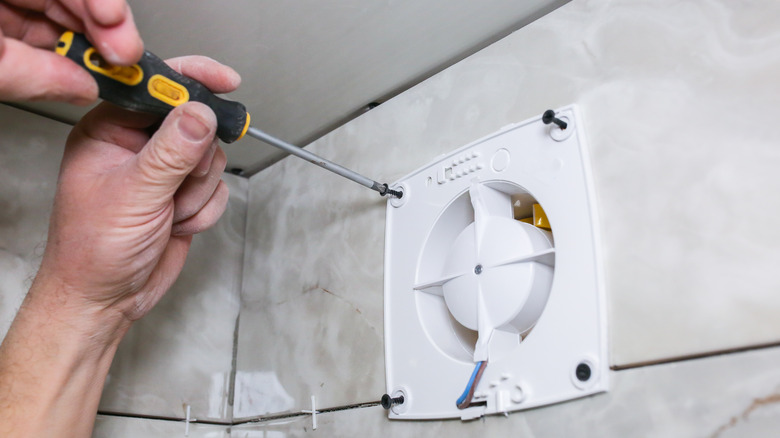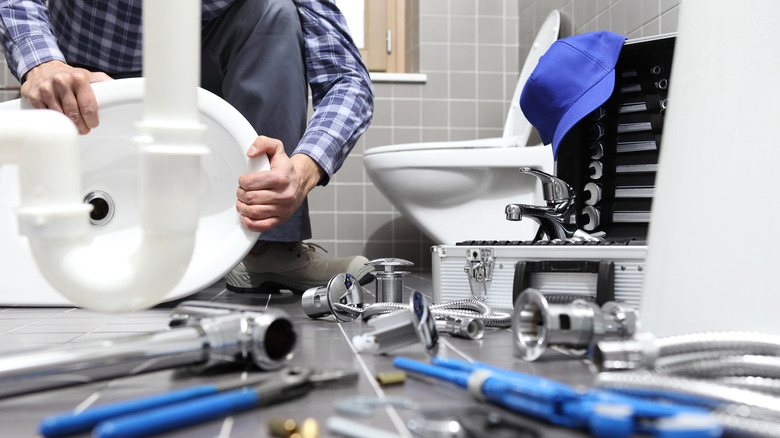What's Causing Your Toilet To Leak At The Base And How Can You Fix It?
Experiencing water leakage around the base of a toilet can be distressing, especially if you step onto a wet floor first thing in the morning. While identifying the source of the leak might be challenging, it can normally be narrowed down to a deteriorated wax ring, a corroded bolt, or a connector piece that needs replacing or tightening. Additionally, water at the base can sometimes be caused by toilet tank condensation, a hairline fissure, or even a loose water supply line. A leaking toilet at the base can have serious consequences and shouldn't be ignored. These seepages are often difficult to detect and, if left unaddressed, can cause extensive damage to the flooring and walls. The water from a toilet base isn't clean to begin with, and on top of that, the excess water can create a moist environment that promotes the growth of mold and mildew, which can cause allergic reactions.
That being said, most of these issues can be resolved without professional assistance since the repairs are typically straightforward and inexpensive. In most cases, a simple fix can be completed in as little as 30 minutes. But if you're unsure or apprehensive about repair jobs, never hesitate to contact a professional.
Relatively easy solutions for a leaky base
Water pooling on the floor around a toilet doesn't always mean you're dealing with an internal leak. It could be something as minor as condensation. When moisture in the air condenses on the outer surface of the toilet bowl or tank, it forms droplets that accumulate on the floor. This can happen if the toilet is constantly running or if there is a difference in temperature between the room and the water in the tank. If your toilet is constantly running, this is something that you'll want to address in addition to your leaking issue.
If it is condensation, there are a few different ways to tackle the issue. You can boost the ventilation in your bathroom by installing a more robust exhaust fan. Other easy options are to keep the door slightly ajar to increase airflow, or strategically place a drip tray under the toilet tank to collect the excess moisture. If the flapper is damaged, this can cause a continuous flow of cold water into the tank. This is easy to replace, and can also potentially be the reason why your toilet is continually running or hissing.
You might want to hire a professional
Most toilets consist of a lower bowl and an upper tank connected using brass or plastic bolts and a special connector piece called a mack washer. With separate tanks and bowls, the bolts connecting them can become loose, and the O-ring gasket between them may crack or loosen. Tightening the bolts can sometimes be the solution to this connectivity issue. However, if the gasket is defective, it needs to be replaced with a new one. In the case of one-piece toilets where the tank and bowl are integrated, there is no possibility of leakage this way.
If any bolts are rusted or are difficult to tighten, you need to have them replaced. Only professionals with a bolt cutter should attempt this. A faulty seal is another possible cause of a loose toilet. Over time, wax toilet seals can become hardened or loose, which can lead to water leaking from the base of your loo. In some cases, the original seal may have been bad from the beginning. This would obviously need to be replaced by a professional or a very experienced DIY enthusiast. That's because the toilet will need to be removed and properly cleaned and a new wax seal or silicone ring will need to be installed as a functional replacement.


